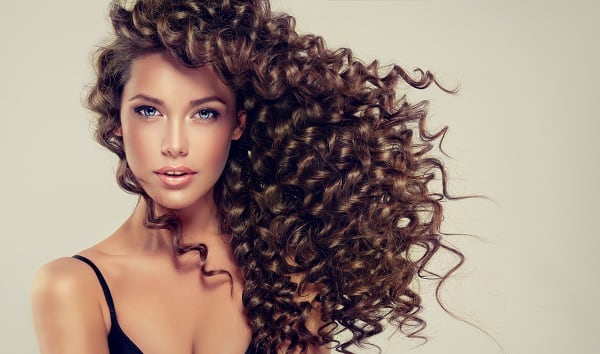Ahead of a presentation that he will give at next month’s in-cosmetics Latin America event, we spoke to Euromonitor International senior analyst Elton Morimitsu to find out what hair care trends and sub categories are driving growth, as well as looking at what is happening in individual markets in the region.
Elton’s presentation will take place on the first day of in-cosmetics Latin America, Wednesday September 18th, at 10:30am, titled: ‘Haircare in Latin America – Trends and Opportunities’.
What LATAM markets are most dynamic for haircare now?
In 2018, the haircare category in Latin America reached $12 billion in sales and grew by 8%. Brazil led the ranking as the best-performing country in the region during this period, reaching $6 billion in sales and 4% growth. This performance reflects a recovery in value sales after three years of negative results, although Brazilian consumers still take a more rational approach to buying haircare products.
Mexico ranks second within the Latin American bloc, reaching $1.8 billion in sales and 4% growth. Professional haircare recorded the fastest value growth in the category in the country for another year in 2018. One driver of this growth is the high-quality positioning that professional products have, with formulations that are considered more effective than commercial brands.
In Chile, the haircare category grew by 1% in present value in 2018 and reached $654 million in sales. In this very price-oriented category, commoditization and brand loyalty are major challenges for companies. Most brands have made great efforts with regards to ingredients, clearly claiming their benefits on the packaging. However, a large number of companies have done this simultaneously, meaning that consumers are now more likely to choose their shampoos and hair products by "smell" rather than brand.
What type of products are consumers most looking for?

Natural products continue to gain relevance. Consumers in Brazil continue to seek less harsh haircare formulas. Sulphate free, parabens free, silicone-free or petrolatum free are some of the features local consumers are searching for when purchasing a haircare product.
In Mexico, brands are increasingly using natural sensory ingredients in haircare formulations, as they render the scent and appearance of products more appealing, while also enhancing their performance. An emerging interest in aromatherapy is translating into the use of essential oils such as lavender and peppermint oil, especially in conditioners.
In Chile, local and international brands are focused on free from formulations. “No salt” products have emerged as having mass appeal in Chile. However, consumers are not yet fully aware of the benefits of using products with or without salt.
Among consumers in Peru, there is a tendency to prefer natural ingredients, such as argan oil, which is considered not harmful to either the hair or the end-user. Other popular natural ingredients include coconut milk, cocoa butter and rosemary.
Products with natural and organic ingredients are expected to gain relevance and increase sales during the forecast period in Ecuador. Today, the offer is limited to artisanal products and local small players, which still do not have strong distribution at main retailers.
Salon professional haircare continues to grow. There are around 35,000 hairdressers’ and beauty salons in Colombia and the majority are small independent businesses located in residential areas. Colombian women pay a lot of attention to the appearance of their hair and to beauty in general. The number of establishments is growing rapidly, contributing to salon professional haircare being the fastest-growing category in haircare over the review period.
Salon professional haircare recorded the fastest current value growth within haircare for another year in 2018 in Mexico. Growth drivers include the high-quality positioning that salon professional hair care products have, with formulations that are perceived as being more effective than commercial brands.
Sales benefited from consumers seeking higher value-added products in the Brazilian market. Sales through different distribution channels have been helping the subcategory to post stronger results. In-particular internet retailing helps increase awareness about such products. The wider availability of larger sizes of such items also helps convince those consumers who are focused on cost-benefit ratios.
In Uruguay, despite being a smaller category in value sales, the quantity of beauty salons in the country has boosted value sales of salon professional haircare products.
In Ecuador, the ‘nesting’ trend amongst consumers affected salon professional haircare during 2015 and 2016. Consumers stayed at home more often; they also performed certain haircare treatments at home, something they previously would have paid for in a hair salon. Even though a significant proportion of the population has learned to colour their hair at home, during 2017-2018, salon professional haircare products enjoyed a sales recovery, with many consumers returning more frequently to hair salons, more willing to increase their expenditures.
How is natural hair care evolving in the region?
The trend of searching for sulphate free, parabens free, silicone-free or petrolatum free products continues to be favoured by consumers looking after their natural hair (without perms or relaxants). Products that do not contain such ingredients help consumers keep their hair healthier.
Is men’s hair care growing? If so, which areas?
Men’s haircare is declining. In 2014 the market size in Latin America was around $12.5 billion and in 2018 it reached $11 billion. Some commercial brands are actually decreasing the number of SKUs dedicated to men´s haircare. Niche brands are focusing on the category more, although the often-higher prices prevent many consumers from purchasing them.
Have you noticed a spike in scalp care? If not, do you think this area has potential?
More brands are starting to focus on scalp care. Consumers are becoming more aware of scalp health and interested in understanding which products may help them. For now, the biggest area associated with scalp care continues to be dandruff. Several commercial and premium brands have developed dedicated anti-dandruff products. The interest in scalp care is also translating into some professional hair salons, which are starting to offer dedicated services.
Haircare manufacturers are also exploring the use of ingredients that are primarily used in skincare. LHA, salicylic acid and prebiotics are some of the ingredients now being used within haircare formulations.
How do you see the LATAM haircare market evolving in the next five to ten years?
Haircare is expected to continue its growth trajectory. We expect sales to post a 3.5% CAGR over the coming five years. Latam consumers have a particular interest in maintaining their hair. The interest within the local market also explains why big companies, such as L´Oréal and Pierre Fabre, have R&D areas in Brazil, to focus on this segment. Innovation is expected to continue growing, as local consumers demand specific formulations to address their needs.


